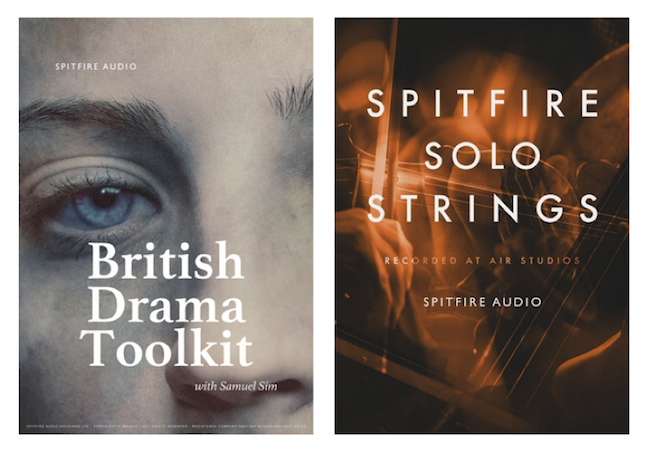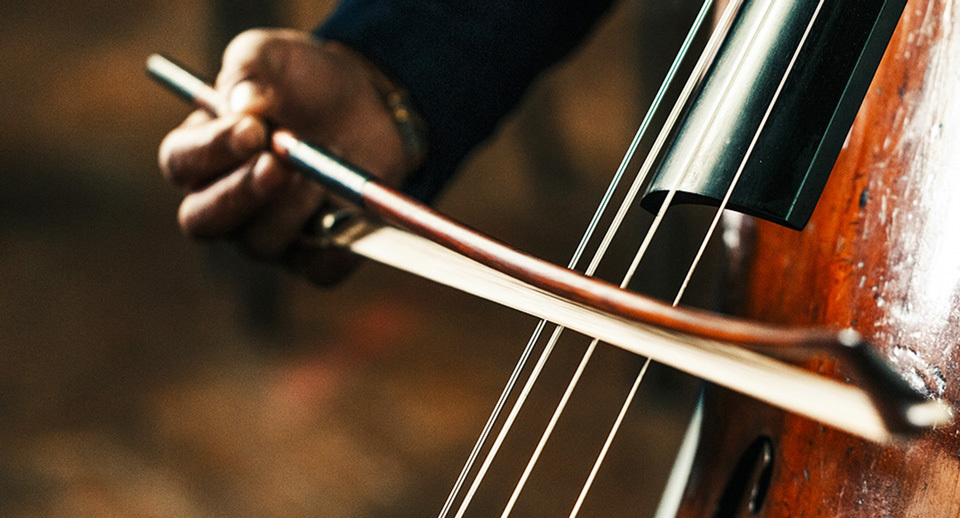New Software Review: Spitfire Audio British Drama Toolkit and Solo Strings

Bringing new levels of intimacy with the British Drama Toolkit, and pushing Solo Strings to the next level, Spitfire Audio continues to solidify their place at the forefront of virtual instrument design.
Fans of Spitfire Audio know well that 2018 has been a busy year for them. Since January, the company has released the acclaimed Hans Zimmer Strings, the rebranded LABS range of free plugins, and an additional set of mic positions for their Chamber Strings range.
Spitfire’s newest offerings, the British Drama Toolkit and Solo Strings libraries, continue in the company’s tradition of pushing the limits of virtual instruments as we know them. Today, I’ll be taking a look at what these two new libraries have to offer.
British Drama Toolkit
Pursuing originality in your music is crucial to staying relevant, but having to stay original cue after cue and song after song can be daunting. This need is what brought Spitfire’s British Drama Toolkit (BDT) to life. Created with the help of award-winning composer Samuel Sim, this intimate string and woodwind library is designed to bring a certain sense of honesty and intimacy into your arrangements.
Built for Native Instruments’ Kontakt engine, BDT consists of 10 main patches with additional folders that offer individual articulations for each instrument group. One of the biggest differences between BDT and other Spitfire string and woodwind libraries is the omission of mod wheel control for dynamics. Instead, Spitfire have opted to allow you to use keyboard velocity (the force with which you press the keys) in order to switch between different dynamic samples. This feature also comes with their new Velocity Layer View, and allows you to play the keyboard with both hands, as opposed to having to rely on one hand to play notes and the other to ride the mod wheel in order to craft a realistic performance.
Having been a fan of their Orchestral Swarm, Albion V Tundra, and Hans Zimmer Strings libraries—which at times also celebrate the beauty of quiet whispered textures—BDT was a welcome addition to my library of sounds. While I did sometimes feel the absence of the mod wheel control, I realized that part of the beauty in this library is actually the inconsistencies the player brings.
What I mean by this, is I have the habit of playing softer with my left hand (which would trigger the soft textures), and louder with my right hand, triggering louder samples for higher notes. If playing chords with a patch where the mod wheel is mapped to dynamics, you wouldn’t be able to trigger these two types of articulations simultaneously within the same patch. However in BDT, you can seamlessly switch between textures just based off velocity, crafting a more “human” performance.

In partnership with composer Samuel Sim, Spitfire’s British Drama Toolkit is a strong choice for injecting that extra bit of emotion into your productions.
The “Long Chiffs” and “Long Chatter” patches in the British Drama Toolkit really stood out to me. Long Chiffs is an articulation consisting of flute and piccolo that is produced by a sharp burst of air at the start of the note, giving a bright and immediate attack. Long Chatter is an articulation consisting of the clarinet and bass clarinet repeating the same note in seemingly random rhythmic intervals, which when layered mimics the effect of people chattering.
While BDT is amazing for adding layers of string and wind textures to your compositions, it is still a very playable library for more articulate passages. And the fact that it is created in such a way that you can play with both hands means that it is a great sketching tool for getting your ideas down quickly.
In terms of critiques, I have absolutely nothing for the British Drama Toolkit. At $200, it’s relatively cheap for a Spitfire library—and though it was made for a niche audience of composers who appreciate textural string and wind performances, it’s still incredibly versatile and inspiring to play. I thought the lack of mod wheel control would make it hard to get realistic crescendos and decrescendos, but setting up a MIDI controller to CC11 for expression (secondary volume control) allowed me to easily command the dynamics of the sounds in this library.
All in all, Spitfire have knocked it out of the park with the British Drama Toolkit library. It’s a powerful and musical tool that any and every composer would benefit from if added to their arsenal. While there are other string and woodwind libraries on the market, there is no other library that matches the unique sonic aesthetic of this one. The subtle movement and fluctuations in timbre when holding down a note, along with the various playing styles that have not been sampled before, make BDT a very unique tool.
With bespoke bowing techniques and breathing patterns, along with textures full of dramatic movement, it’s no doubt that Spitfire’s British Drama Toolkit will leave you inspired.
Solo Strings
Spitfire released their first Solo Strings library 6 years ago. Since then, the company has racked up over 2,500 hours of sampling experience and have decided to revisit the library, crafting a new sonic toolkit that blends well with their already-existing Chamber and Symphonic strings offerings.
In the main instrument folder of Solo Strings, there are 3 violin patches, a viola, cello, and bass—all recorded to 2” analog tape. Because the Spitfire libraries recorded at AIR Studios place the players in various physical locations, the patches in Solo Strings each serve different purposes while sharing a lot of similar articulations.
For instance, the “Virtuoso Violin” patch places the soloist out in front of the orchestra, and is great when you need a defined string line that will still blend well with the rest of the orchestra. The “1st Desk Violin” places the soloist in the 1st chair position, and is great for adding a bit more presence from the 1st violins in Spitfire’s Chamber and Symphonic Strings. The “Progressive Violin” is placed further away from the conductor, and offers more of a contemporary sound while also including less traditional techniques like “Mandolin pizzicato”. (This is similar to a conventional pizzicato, but the player holds the violin like a mandolin and plucks the strings accordingly, creating a slightly different timbre.)
Another unique timbre on offer is “Tremolo whispers”, where the player plays very quietly while moving the bow quickly, creating a beautiful—sometimes haunting—texture. These are just a couple of the standout articulations available in Solo Strings; there are so many different articulations offered for each instrument.

Captured at London’s AIR Studios, the patches designed for Solo Strings were based largely around the players’ physical locations in this legendary room.
I found the “Virtuoso Violin” has a majestic quality to it, and the sampled re-bows create a realistic feeling of the player moving the bow up and down across the strings. Additionally, the flautandos and harmonics are so soft and sweet, adding an air of intimacy that blends incredibly well with the BDT library. The “Progressive Violin” is also great for adding slightly more creative textures to your arrangements, but my favorite of the violins is the 1st Desk setting. Though it is really subtle when you double your first violins with it, you lose a lot of presence if you take it away.
I personally don’t find too much use for solo violas in general, but the one in Solo Strings is quite warm and fits well with the rest of the collection. Similarly, solo basses aren’t something I rely on too much, yet the one in this collection is very dynamic and open, and has convinced me to try using solo basses more. The solo cello though, is an instrument I rely on quite heavily in my own personal writing, and the one in Solo Strings reminds me of the opening sequence in Game of Thrones. It has a very sweet, yet in-your-face sound; it is sonically stunning, and the legato patch is great for writing melodies.
While I’m not the biggest fan of legato string patches in general, the ones included in Solo Strings are so incredibly easy to play, simple to program, and are just downright fun to work with. Hitting one note and then another one quietly will trigger a long portamento, while doing a “harder” transition will result in a bow change transition sound.![]()
To be fair, programming solo string performances in general is no easy task, though Spitfire’s new library makes it possible to get somewhat realistic results quickly. Having said that, there is a lot of competition in the world of solo strings for Kontakt. Cinematic Solo Strings, Cinesamples Solo Strings, and Chris Hein’s Solo Strings collections are all fantastic.
However, the fact that Spitfire’s Solo Strings was recorded to tape at the legendary AIR Studios in London makes it a truly unique tool, and is a testament to Spitfire’s dedication to the sampling process. At $339, this library should be the first you look at if you already own the Spitfire Symphonic Strings range, or any other Spitfire library, as Solo Strings can serve as an extremely powerful layering tool.
Summing it Up
With Solo Strings and the British Drama Toolkit, Spitfire have continued creating outstanding sample libraries that uphold their reputation as one of the best developers in the industry. Make sure to check out the video demonstrations of these products on Spitfire’s YouTube channel here, where you can learn more about all the included features and hear them in context.
If you enjoyed this review, feel free to check out my “5 Ways to Make Your Programmed Strings Sound More Convincing” story.
Please note: When you buy products through links on this page, we may earn an affiliate commission.






